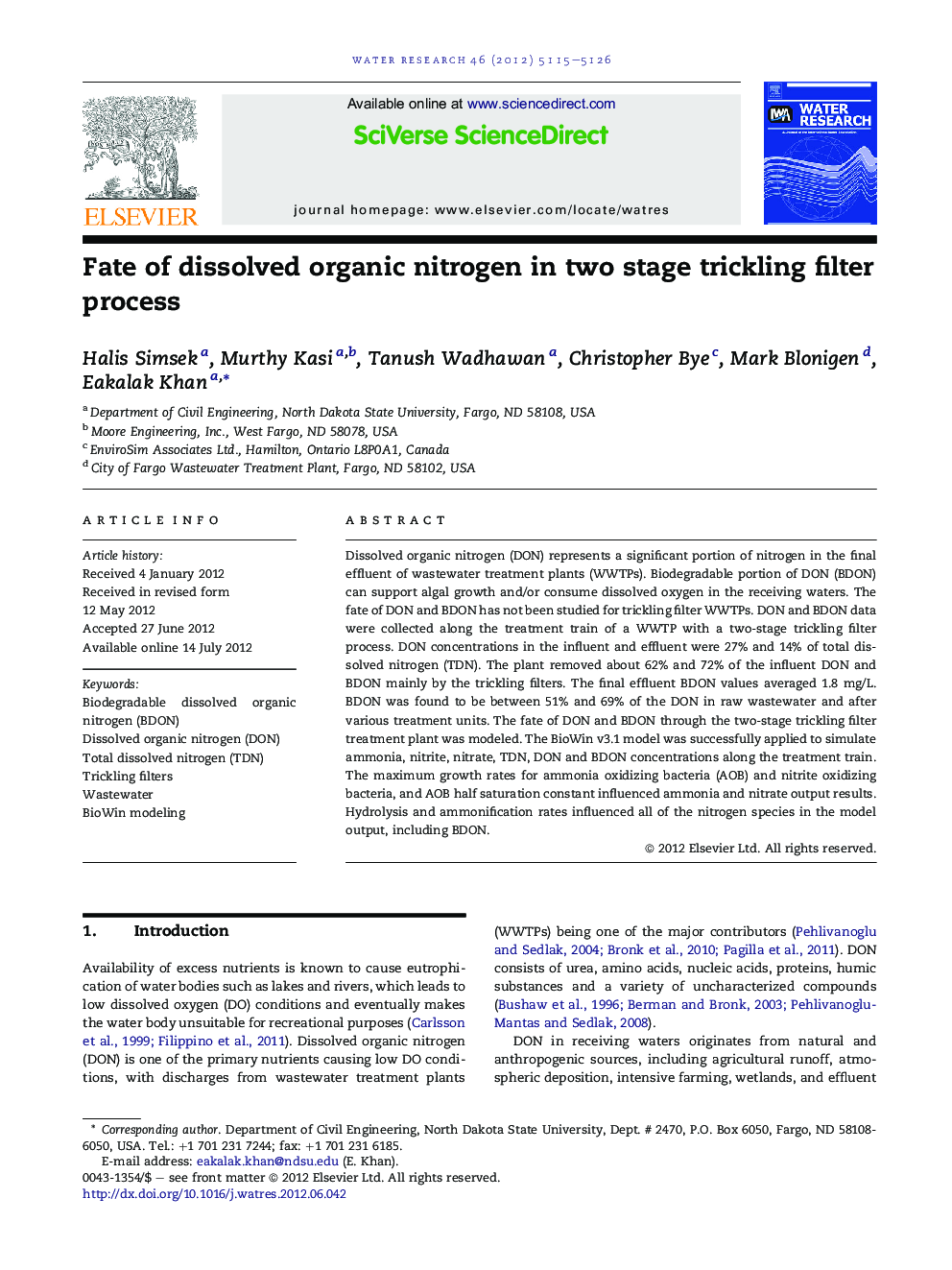| Article ID | Journal | Published Year | Pages | File Type |
|---|---|---|---|---|
| 4482739 | Water Research | 2012 | 12 Pages |
Dissolved organic nitrogen (DON) represents a significant portion of nitrogen in the final effluent of wastewater treatment plants (WWTPs). Biodegradable portion of DON (BDON) can support algal growth and/or consume dissolved oxygen in the receiving waters. The fate of DON and BDON has not been studied for trickling filter WWTPs. DON and BDON data were collected along the treatment train of a WWTP with a two-stage trickling filter process. DON concentrations in the influent and effluent were 27% and 14% of total dissolved nitrogen (TDN). The plant removed about 62% and 72% of the influent DON and BDON mainly by the trickling filters. The final effluent BDON values averaged 1.8 mg/L. BDON was found to be between 51% and 69% of the DON in raw wastewater and after various treatment units. The fate of DON and BDON through the two-stage trickling filter treatment plant was modeled. The BioWin v3.1 model was successfully applied to simulate ammonia, nitrite, nitrate, TDN, DON and BDON concentrations along the treatment train. The maximum growth rates for ammonia oxidizing bacteria (AOB) and nitrite oxidizing bacteria, and AOB half saturation constant influenced ammonia and nitrate output results. Hydrolysis and ammonification rates influenced all of the nitrogen species in the model output, including BDON.
► More than half of effluent DON from trickling filters was biodegradable. ► Both BOD and nitrification trickling filters removed BDON. ► Higher BDON was removed during winter although not statistically significant. ► First successful modeling of DON and BDON fate in a trickling filter plant. ► Modeled BDON was most sensitive to hydrolysis and ammonification rates.
